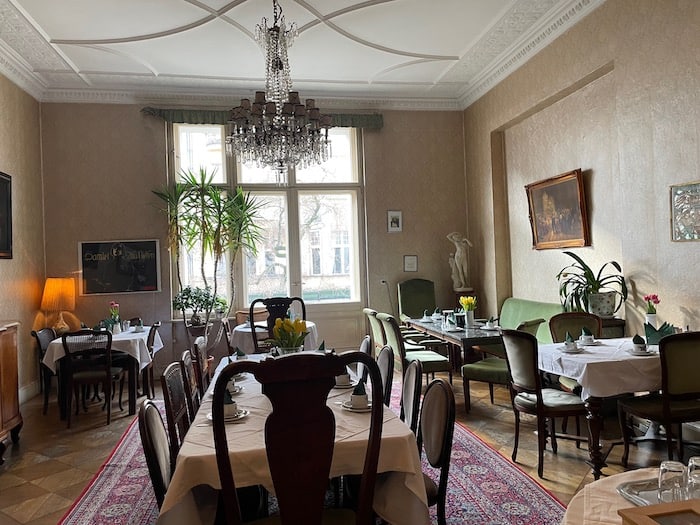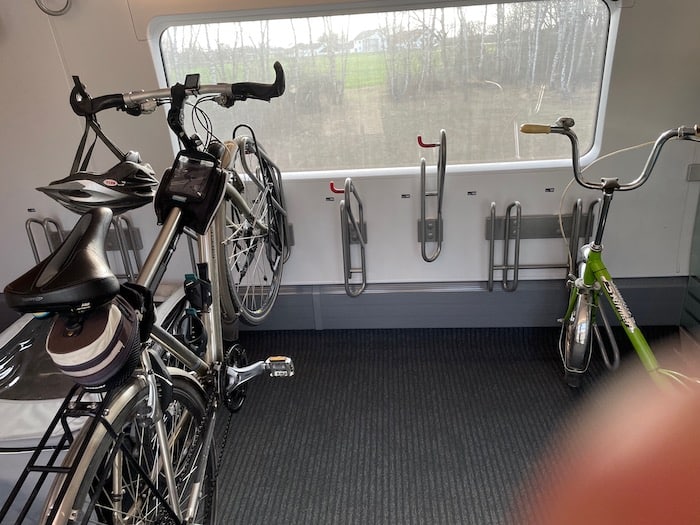Ten days out from my trip to Germany, and I’m feeling fine, thank you. This, despite the fact that I stopped wearing my mask about halfway through the trip, except when on a crowded, stuffy bus or subway. I did not even wear my mask on the eight-hour flight home. I was sitting way in the back, no one around me or even up ahead was sneezing or coughing, and—most relevant—the air in commercial airplanes gets exchanged every two to three minutes, so risks of getting a respiratory virus are actually lower than in a restaurant. (This New York Times article from 2021 gives a helpful visual explanation.)
This is not to say that I was careless. On my flight to Germany, I wore my mask most of the time, to be sure I didn’t kibosh the trip. I also wore it in the airport when in a crowd and in other busy public transit terminals. The key determinant for me was always how many others were around without masks, if they were sneezing or coughing, and if fresh air was in the mix. On commuter rail, for example, when the doors opened every few minutes to let someone on or off, I felt safe without the mask.
I also did a lot of walking during my travels, between four to six miles a day. So, plenty of fresh air and exercise, plus a healthy diet and sound sleep, once I adjusted to the new time zone, all helped me to stay well. (I must also note that my feet were significantly helped by a new discovery, Orthofeet shoes, which are very well designed, comfortable, and not clunky, despite the brand name. Definitely made it possible to go farther than I expected.)
Since I’ve been home, I’ve tried to keep up with daily walks and physical activity. It’s taken much of the past week for my body to fully adjust back to DST here, but I have definitely been catching up on my sleep, at last.
As to masks at home, I’m following the same principles as I did on my trip. I’m keeping up with all of my vaccinations, always carrying hand sanitizer with me and using it whenever I use a touch pad or grab a door handle. (Actually, this has been my practice for years, given my propensity for ulcer infections on my fingers). If I’m in a crowded, enclosed space or around people who are coughing or sneezing, I always have a mask on hand, and if I’m not feeling well, I stay home. I still have a stash of Covid tests, and I’ll certainly test if asked before attending a get-together. But for the most part, thanks to vaccines and good public health practice, I feel safe going maskless most of the time.
That said, I also fully respect anyone’s decision to wear a mask, for their own safety, and I will wear one if someone asks me to, in order to help them feel safe.
Here’s hoping that Covid truly has morphed to an endemic state, and masking becomes merely a matter of personal choice, even for those of us whose immune systems need more tending.
Evelyn Herwitz blogs weekly about living fully with chronic disease, the inside of baseballs, turtles and frogs, J.S. Bach, the meaning of life and whatever else she happens to be thinking about at livingwithscleroderma.com. Please view Privacy Policy here.
Image: cottonbro studio
























